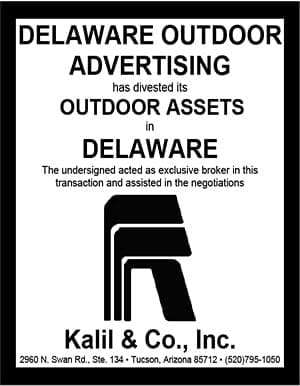 Hoya Capital published a decent out of home review titled Billboard Reits: We’re Paying Attention (Lamar Vs Outfront). Forward a copy to your banker. The article explains how out of home works and summarizes industry strengths (e.g. regulatory barriers to entry, digital billboard upside, attractive CPM versus other media, low maintenance capep) and risks (advertising cyclicality). Two sentances caught Billboard Insider’s eye:
Hoya Capital published a decent out of home review titled Billboard Reits: We’re Paying Attention (Lamar Vs Outfront). Forward a copy to your banker. The article explains how out of home works and summarizes industry strengths (e.g. regulatory barriers to entry, digital billboard upside, attractive CPM versus other media, low maintenance capep) and risks (advertising cyclicality). Two sentances caught Billboard Insider’s eye:
On average, billboard REITS pay an average dividend yield of 4.9%, well above the REIT Sector average of 3.6%.
Billboard Insider thinks low out of home maintenance capexp explains this. Steel monopoles don’t need as much upkeep as commercial buildings. In addition, billboard assets can be acquired at a lower multiple than real estate assets. Billboard companies sell at 10-12 times billboard cashflow which equates to a 8-10% cap rate. Commercial real estate by contrast, trades at a 5-7% cap rate which implies a 14-20 times cashflow multiple. If you pay a higher cashflow multiple for an asset you’ll have less money to dividend.
Out of home is one of the least-sensitive REIT sectors to interest rate movement and the single best sector in our Inflation Hedge Factor metric.
Each of the public out of home execs has been singing this tune. Clear Channel Outdoor CEO Scott Wells said this at last year’s Cowen Tech, Media and Entertainment Conference: “Both in the US and Europe half or more of our costs are our site lease and in the US those costs are quite fixed. Most of them are long term contracts that get renegotiated 3-7 year cycles…Inflation…is a friend of the business because your costs are fixed but you’re able to increase rates…” Wells is right. Out of home ad contracts are short (1-12 months). Out of home leases are long and often have low fixed annual inflators or no inflator at all. The result is that ad revenues can grow faster than lease expenses in times of inflation.
[wpforms id=”9787″]
Paid Advertisement

















